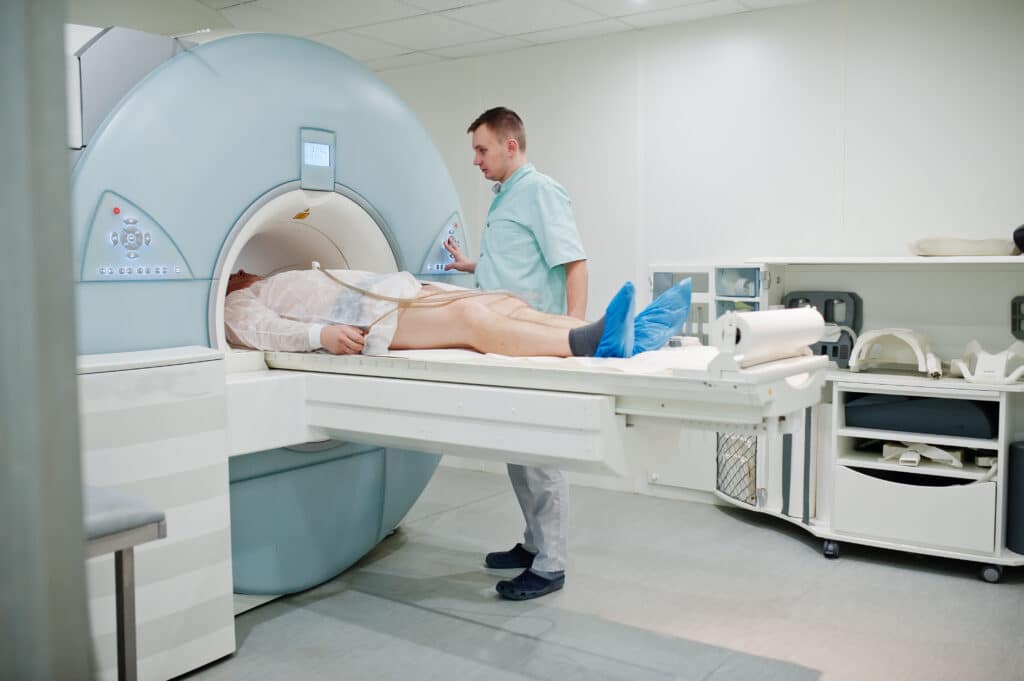
Ask a Physical Therapist: Do I need an MRI?
One of the most common questions I receive from my patients suffering with low back or neck pain is whether or not they should get an MRI. It’s a fair question…its no fun to deal with pain that doesn’t seem to go away, or that shoots down your leg or arm.
So, it makes sense why folks would want to have this type of imaging performed. MRI’s will show what is wrong and the problem can then be fixed…right?
Not necessarily….
MRI’s are powerful diagnostic tools. They provide excellent pictures of your anatomy and can detect serious diseases like tumors, cysts, as well as abnormalities in the brain or spinal cord and other tissues of the body.
You may saying to yourself, sounds like the perfect test to tell me what is wrong.
The issue however, is that the MRI is so powerful it detects every imperfection of the tissues, many of which can be related to the normal aging process. These imperfections of low back or neck could include disc bulges, stenosis, arthritis, and degenerative joints.
Sounds great..sign me up for the MRI, right?
The problem here, is that the MRI may not be able to pinpoint the specific source of your pain.
Just because your MRI finds you a have a bulging disc doesn’t mean it is the cause of your lower back pain! Don’t believe me…? Look what the research shows…
A study by Nakashima et al in 2015 looked at the MRI findings of over 1200 individuals who had NO neck or radiating arm pain. Of these volunteers, a shocking 87.6% had bulging disks!!
Several other studies of MRI’s performed on healthy, painfree individuals lower backs, showed between 60-80% had of bulging discs on their MRI.
If so many people without low back pain have these findings on an MRI, can we confidently conclude that these findings are the true cause of their symptoms?
Making assumptions based solely MRI findings often leads to over treatment and even potential surgery. Additionally, the more testing and treatment a patient undergoes, the more likely factors such as fear and anxiety come into play which have been associated with persistent or chronic low back pain.
Don’t get me wrong, MRI’s are amazing medical tools. However, they may not be the best option for pin pointing the exact cause of one’s low back or neck pain. They also can be very expensive and lead to unwarranted surgery.

When should I get an MRI?
If you have had a fall, traumatic accident, noticing progressive weakness, bowel or bladder issues, or pain that does not improve over time, then a MRI is definitely warranted.
Something to consider, though, is that up to 80% of back pain folks experience during their lifetime is mechanical in nature. Mechanical back pain is caused by placing abnormal stress and strain on muscles of the vertebral column. It typically results from bad habits such as poor posture, poorly-designed seating, and incorrect bending and lifting motions. Mechanical back pain comes and goes, and at times can spike and become very unruly.
One of the most effective treatments for mechanical neck or back pain is specialist physical therapy. Physical therapist training is not solely focused on improving one’s pain and function, but also figuring out if the problem is truly a musculoskeletal issue or something more serious needing the immediate attention of a physician.
At Move Empower Concierge Physical Therapy our spine specialists are trained in evaluation and treatment of spine pathologies. Our hands on manual therapists specialize in techniques that quickly and effectively restore your mobility and function to get you back to activities you love to do.
Are you suffering with lower back or neck pain, and have been urged to get an MRI? Curious if specialist physical therapy could help you determine what is going on? If so, take advantage of our FREE discovery session.

